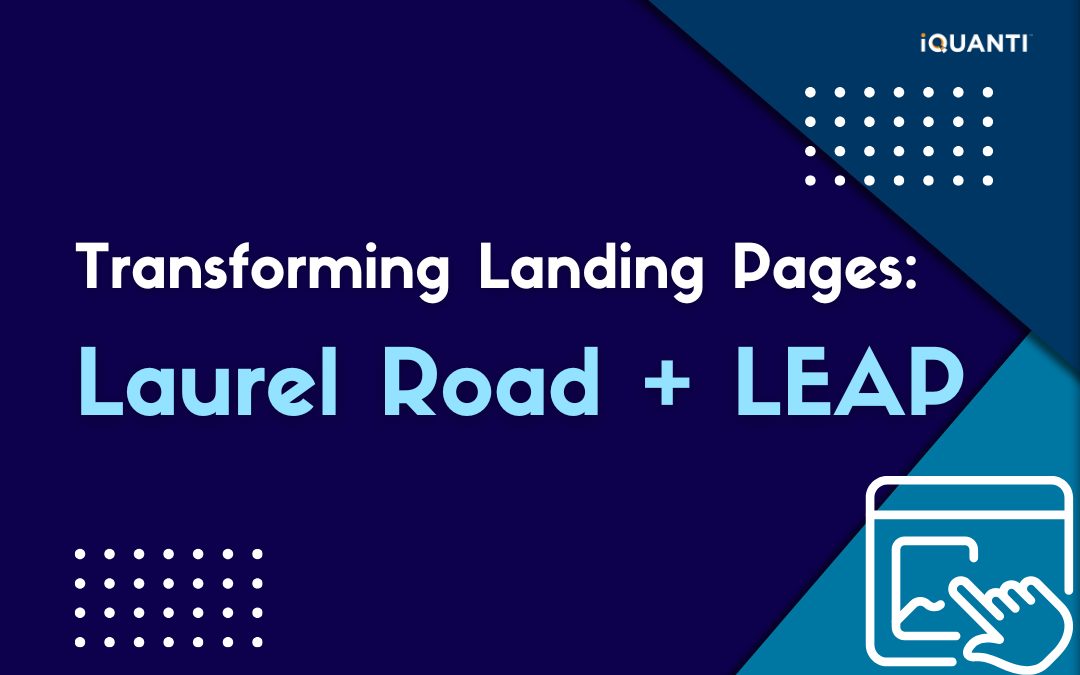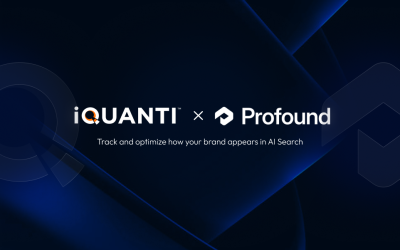Executive Summary

Laurel Road, a digital banking platform and a subsidiary of KeyBank, partnered with iQuanti to improve conversion performance on one of its key product pages—High-Yield Savings Accounts (HYSA). To increase engagement application start rates, the team adopted a unified, AI-led optimization strategy. Using the LEAP framework, Laurel Road was able to identify high-impact opportunities and rapidly execute improvements. The result: a 152% increase in application form fill starts for desktop, and 83% uplift on mobile, dramatically improving the landing page’s effectiveness.
The Challenge
Marketers often over-invest in optimizing media budgets, ad targeting, and creative execution, while underinvesting in the landing page experience itself. Yet even small improvements to landing page performance can yield significant returns.
A key challenge the team had: critical product information on the High-Yield Savings Account (HYSA) page was not easily scannable or prominently placed, especially on mobile devices, where most traffic originated.
This issue isn’t unique. A common example: a user searching for a cashback credit card with no annual fees landed on a leading bank’s landing page where this information isn’t visible until the fourth fold, a disjointed experience that disrupts user intent.
At Laurel Road, a similar issue affected the HYSA landing page. Users had to scroll extensively or sift through blocks of text to find key product benefits like trust indicators, CTAs, or safety of funds.


On top of this, while the page was technically responsive, it wasn’t truly mobile-first. The content wasn’t designed with mobile consumption behaviors in mind, slowing down decision-making and hurting conversion rates.
Ultimately, the challenge was about aligning the experience with customer intent and making high-value information instantly accessible.
The Solution
To address these challenges, iQuanti implemented a unified, AI-led optimization strategy using the LEAP framework, a proprietary platform designed to evaluate and enhance landing page performance with scientific precision.
With LEAP, users simply enter the domain and target URL, and the tool conducts a comprehensive analysis across seven critical dimensions:
- Relevance – Alignment between ad copy and landing page content
- Assurance – Trust and credibility indicators such as security and brand consistency
- Decision Drivers – Key features and product value propositions
- Call to Action – Visibility, clarity, and positioning of CTAs
- Ease of Use – Scanability and visual hierarchy
- Tech Performance – Load time and responsiveness
- Accessibility – Compliance with accessibility standards

The platform uses AI to score performance across these categories based on 150+ factors, taking the guesswork out of optimization and providing a structured way to pinpoint high-impact areas.
Data-Driven Hypothesis Building and Prioritization
Beyond diagnosis, LEAP delivers an evidence-based, data-backed approach to hypothesis generation and prioritization. Each optimization idea is assessed based on visibility (e.g., above the fold), traffic volume, impact on KPIs, and supporting evidence (e.g., heatmaps, session recordings, web analytics).


Key Insights from Laurel Road’s HYSA Page Analysis
The LEAP analysis of the High-Yield Savings Account landing page revealed several key improvement areas:
- Trust Inducers Missing: Accolades, testimonials, and FDIC insurance were not prominently displayed to build user confidence.
- Value Proposition Placement: Key benefits and features were buried deep in the page instead of being highlighted in the top fold, especially critical for mobile.
- Scanability Issues: Long paragraphs made the content harder to skim, especially on mobile.

This structured, insight-driven approach enabled Laurel Road to move from generalized UX improvements to targeted, high-ROI enhancements, setting the stage for measurable uplift in application performance.
The Result
By applying the LEAP framework and executing a series of high-impact optimizations, Laurel Road significantly improved the performance of its HYSA landing page. One of the most immediate wins came from making the Annual Percentage Yield (APY), a core decision factor, more prominent in the top fold. Additionally, restructuring key benefits into scannable bullet points improved readability and reduced user effort, especially on mobile devices.
These focused improvements delivered faster time-to-value and helped the brand better align with user expectations and behavior across devices.

Key Outcomes
- 152% increase in mobile application form start rate
- 83% overall uplift in desktop application form starts
“This test is a powerful one. Most of us can relate to a high yield savings product and we spent a good amount of money to market this product. However, with this test we got a 100% average lift in application start rate just by optimizing this experience, how it can be scanned and bringing the most important elements of it to light. This is one of those tests where you look at the results and you realize of course that’s what you should have done but it’s harder when you are actually designing these experiences and this methodology really helped us to crack it.”
Why It Worked
The success of this initiative was driven by a structured, AI-led approach that eliminated guesswork and pinpointed high-impact optimization areas through LEAP’s scoring model. What set the effort apart was the holistic collaboration across marketing, UX, and tech teams, ensuring alignment around user intent and business goals. By focusing on data-backed hypotheses prioritized by effort versus impact, Laurel Road was able to quickly implement changes that delivered meaningful, measurable results.
Key Takeaways
- Landing page experience is as critical as ad targeting for performance marketing
- AI-led frameworks like LEAP help de-risk and accelerate optimization
- Breaking silos and aligning teams to user intent creates exponential impact
- A mobile-first mindset goes beyond responsive design, true intent alignment is key
To know more LEAP, get in touch with us.
Disclaimer: This case study has been adapted from the webinar titled “The Science of High-Converting Landing Pages: Boosting Campaign Performance in Banking and Financial Services” conducted on February 26, 2025. All insights and data are sourced entirely from the webinar




